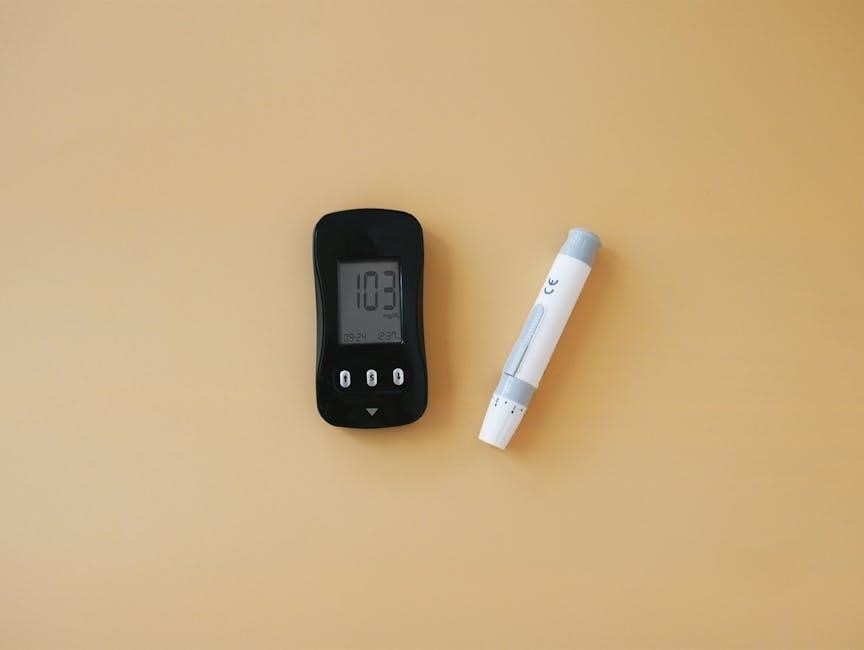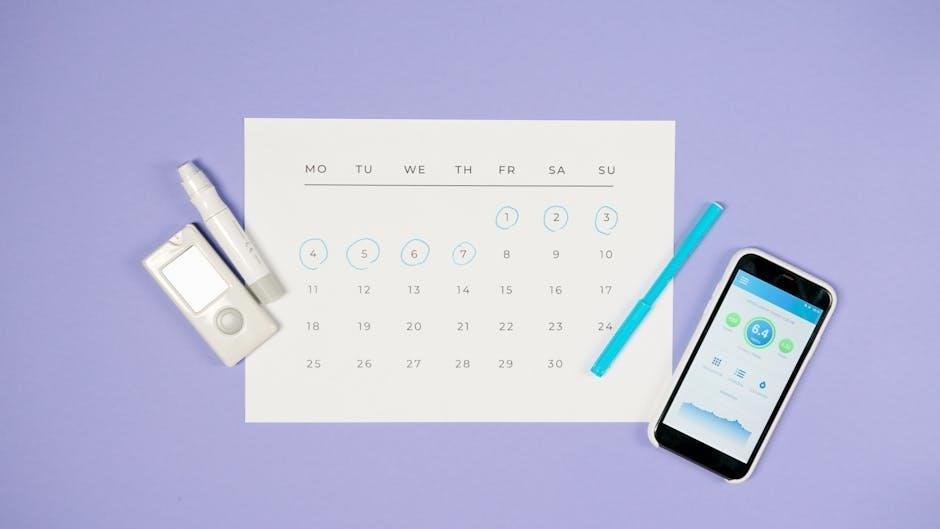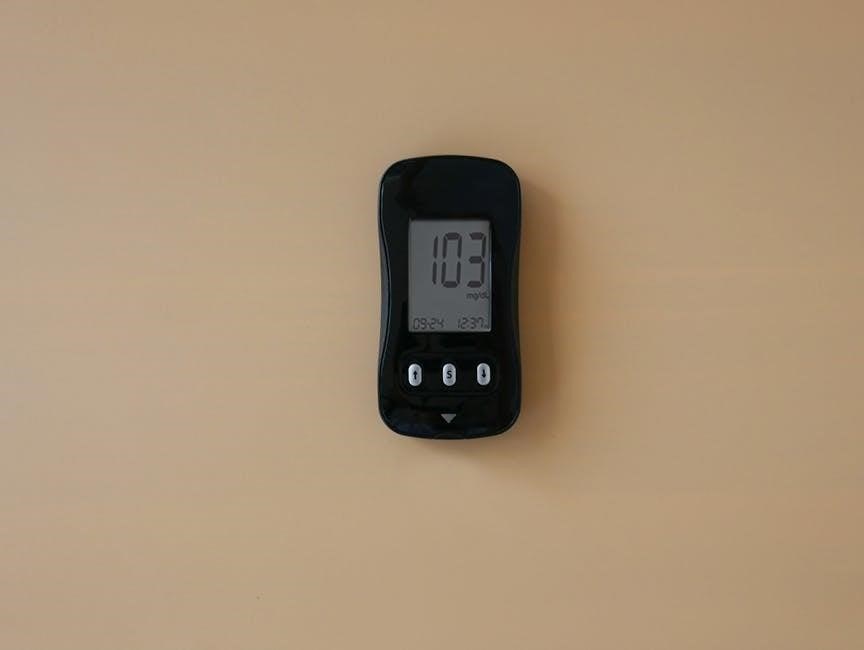bios blood pressure monitor instructions
BIOS Blood Pressure Monitor Instructions: A Comprehensive Guide
Welcome! This guide provides comprehensive instructions for using your BIOS blood pressure monitor. Learn how to accurately measure and monitor your blood pressure at home. Follow these steps for reliable readings and better health management. We will help you use the device effectively.
Overview of BIOS Blood Pressure Monitors
BIOS blood pressure monitors are designed for easy and accurate home use. They help users regularly monitor their blood pressure‚ maintaining a record of measurements for better health management. These monitors are clinically tested and validated for accuracy‚ meeting Hypertension Canada’s requirements.
BIOS Medical is recognized as the number one Canadian blood pressure manufacturer. Their monitors often feature user-friendly designs with one-touch operation and large displays for easy reading. Many models include features like irregular heartbeat detection and blood pressure assessment indicators‚ offering added health insights.
The BIOS Protocol 7D feature simplifies home monitoring by prompting users to take readings at specific times‚ following Hypertension Canada’s recommendations. This protocol involves taking two readings in the morning and two in the evening for seven consecutive days‚ providing a more accurate average.
BIOS monitors come with wide-range cuffs to fit various arm sizes and some include memory storage for tracking readings over time. They are designed to be reliable and user-friendly‚ making them a top choice for basic home monitoring needs. Customer support is available to assist with any questions or issues.
Key Features of BIOS Monitors
BIOS blood pressure monitors boast several key features designed for accuracy‚ convenience‚ and comprehensive health monitoring. Many models incorporate clinically validated technology‚ ensuring reliable blood pressure readings at home. One-touch operation simplifies the measurement process‚ making it easy for users of all ages to take readings quickly.
Irregular Heartbeat Detection is a common feature‚ alerting users to potential heart rhythm irregularities during measurements. Some monitors include a blood pressure assessment indicator‚ providing an immediate understanding of the reading’s classification based on established guidelines. Memory storage allows users to track their blood pressure trends over time‚ aiding in long-term health management.
The 7-Day Monitoring Protocol‚ often included‚ guides users to follow Hypertension Canada’s recommendations for accurate blood pressure assessment. Wide-range cuffs ensure a comfortable and proper fit for various arm sizes‚ enhancing measurement accuracy. Extra-large displays with backlit screens make readings easy to see‚ even in low-light conditions.
Some BIOS monitors offer advanced features like patented Pulse Arrhythmia Detection (PAD) technology and medication alarms‚ promoting comprehensive health management. These features collectively make BIOS monitors a reliable choice for home blood pressure monitoring.
Initial Setup and Preparation
Before using your BIOS blood pressure monitor‚ proper initial setup and preparation are crucial for accurate readings. Begin by unpacking the device and verifying that all components are present‚ including the monitor‚ cuff‚ batteries (or AC adapter)‚ and instruction manual. Install the batteries or connect the AC adapter to power on the device.
Familiarize yourself with the monitor’s controls and display. Locate the start/stop button‚ memory recall function‚ and any other relevant settings. If your monitor offers user profiles‚ select or create your profile to store your readings separately. Before taking your first measurement‚ it is important to read the instruction manual.
Choose a quiet and comfortable environment for your measurements. Avoid distractions and ensure you are relaxed. Sit in a chair with your back supported and your feet flat on the floor. Refrain from smoking‚ consuming caffeine‚ or exercising for at least 30 minutes before taking a reading.
Position your arm on a stable surface‚ such as a table‚ at heart level. This ensures accurate blood pressure measurement. Following these initial setup steps will help ensure your BIOS monitor provides reliable and consistent results.
Proper Cuff Placement and Positioning
Correct cuff placement is paramount for obtaining accurate blood pressure readings with your BIOS monitor. Select the appropriate cuff size for your arm circumference. A cuff that is too small or too large can lead to inaccurate results. Measure your upper arm to determine the correct cuff size‚ typically ranging from 22 to 42 cm.
Remove any bulky clothing from your upper arm. Sit comfortably with your arm supported on a flat surface at heart level. Ensure your palm is facing upwards. Position the cuff on your upper arm‚ approximately 2-3 cm (about an inch) above your elbow. The cuff’s artery marker should align with your brachial artery‚ usually indicated by an arrow on the cuff.
Wrap the cuff snugly around your arm‚ ensuring it is not too tight or too loose. You should be able to insert two fingers comfortably between the cuff and your arm. Secure the cuff using the Velcro closure. Make sure the tubing is not kinked or obstructed.
Double-check that the cuff is properly positioned and secured before starting the measurement. Incorrect cuff placement can significantly affect the accuracy of your blood pressure readings.
Taking a Measurement: Step-by-Step Instructions
Once the cuff is correctly placed‚ you’re ready to take a blood pressure measurement with your BIOS monitor. Ensure you are seated comfortably with your feet flat on the floor and your back supported. Remain still and avoid talking during the measurement process for accurate results.
Press the “Start” button on your BIOS blood pressure monitor. The cuff will automatically inflate. Remain calm and relaxed as the cuff inflates. The monitor will then slowly deflate‚ and your blood pressure reading will be displayed on the screen.
Record the systolic and diastolic blood pressure readings‚ as well as your pulse rate. Wait a few minutes and repeat the measurement to confirm the initial reading. It’s advisable to take multiple measurements and average them for a more accurate assessment.
If your BIOS monitor has memory storage‚ the readings will be saved automatically. If not‚ manually record the date‚ time‚ systolic pressure‚ diastolic pressure‚ and pulse rate in a logbook. Regularly monitoring and recording your blood pressure measurements helps you and your doctor track your health effectively. Refer to the manual for advanced features.
Understanding Blood Pressure Readings
Interpreting blood pressure readings is crucial for effective health monitoring. Blood pressure is measured in millimeters of mercury (mmHg) and consists of two numbers: systolic and diastolic. Systolic pressure‚ the higher number‚ reflects the pressure in your arteries when your heart beats. Diastolic pressure‚ the lower number‚ measures the pressure when your heart rests between beats.
According to established guidelines‚ normal blood pressure is typically considered to be around 120/80 mmHg. Elevated blood pressure ranges from 120-129 systolic and less than 80 diastolic. Hypertension‚ or high blood pressure‚ is generally diagnosed when readings consistently exceed 130/80 mmHg.

It’s important to note that blood pressure can fluctuate throughout the day due to various factors‚ including stress‚ activity level‚ and medication. Therefore‚ a single high reading doesn’t necessarily indicate hypertension. However‚ consistently elevated readings warrant medical attention.
Consult your healthcare provider to discuss your blood pressure readings and receive personalized advice. They can help you understand your individual blood pressure goals and recommend appropriate lifestyle changes or medical interventions if necessary. Regular monitoring and professional guidance are essential for managing blood pressure effectively.
Using the 7-Day Monitoring Protocol
The BIOS blood pressure monitor often includes a 7-day monitoring protocol‚ designed to provide a more accurate representation of your average blood pressure. This protocol aligns with recommendations from Hypertension Canada‚ offering valuable insights for both users and healthcare professionals. The 7-day protocol typically involves taking blood pressure readings twice daily – once in the morning and once in the evening.
To begin‚ ensure you are in a relaxed and comfortable environment. Follow the standard procedure for taking a measurement‚ as outlined earlier. Record each reading carefully‚ noting the date and time. The BIOS monitor may have a dedicated “7D” mode‚ which simplifies the process by prompting you to take measurements at the appropriate times.
Consistency is key to the success of this protocol. Try to take your readings at roughly the same time each morning and evening‚ avoiding periods of stress or exertion immediately beforehand. After seven days‚ the monitor can calculate the average of your readings‚ providing a comprehensive overview of your blood pressure trends.
Share these results with your physician‚ as they can use this data to diagnose or manage hypertension more effectively. The 7-day monitoring protocol offers a more reliable assessment than a single reading‚ leading to better informed treatment decisions.

Troubleshooting Common Issues
Even with careful use‚ you might encounter issues with your BIOS blood pressure monitor. A common problem is an error message on the display. Refer to the user manual for specific error codes and their solutions. Ensure the cuff is properly connected and snugly fitted around your arm. Loose connections or improper cuff placement can lead to inaccurate readings or error messages.
If the monitor displays consistently high or low readings‚ verify your technique. Make sure you are seated comfortably‚ with your back supported and your arm at heart level. Avoid talking or moving during the measurement. If the problem persists‚ compare readings with a healthcare professional’s measurement to check the monitor’s accuracy.
Another issue may be weak or depleted batteries. Replace the batteries with new ones and try again. Some models come with an AC adapter; try using it to power the device. If the display is dim or unresponsive‚ this could also indicate a battery problem.
If you encounter persistent problems‚ consult the troubleshooting section of the user manual or contact BIOS Medical customer support for assistance. They can provide specific guidance for your model and help resolve any technical issues. Remember to have your model number handy when seeking support.
Care and Maintenance of Your BIOS Monitor

Proper care and maintenance are crucial for ensuring the longevity and accuracy of your BIOS blood pressure monitor. Always store the monitor in a cool‚ dry place‚ away from direct sunlight and extreme temperatures. Avoid exposing it to excessive humidity or dust‚ as these can damage the internal components.
Clean the monitor and cuff regularly with a soft‚ damp cloth. Do not use harsh chemicals or abrasive cleaners‚ as they can damage the surface. Gently wipe the cuff to remove any dirt or sweat. Ensure the cuff is completely dry before storing it.

Handle the monitor with care to prevent accidental drops or impacts. These can damage the sensitive electronic components inside. When not in use‚ store the monitor in its original packaging or a protective case to prevent damage.
Regularly check the cuff for any signs of wear and tear‚ such as cracks or leaks. A damaged cuff can affect the accuracy of your readings. Replace the cuff if necessary. Also‚ replace the batteries when the low battery indicator appears on the display. Following these guidelines will help maintain the performance and reliability of your BIOS blood pressure monitor for years to come.
